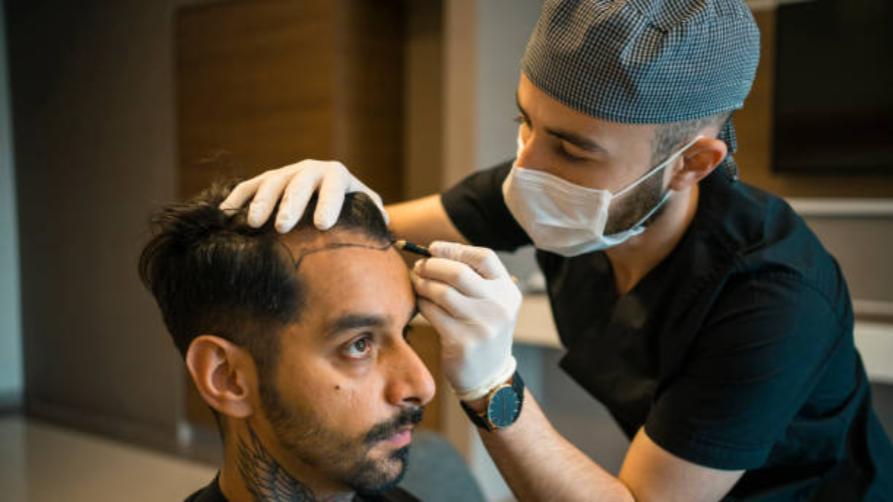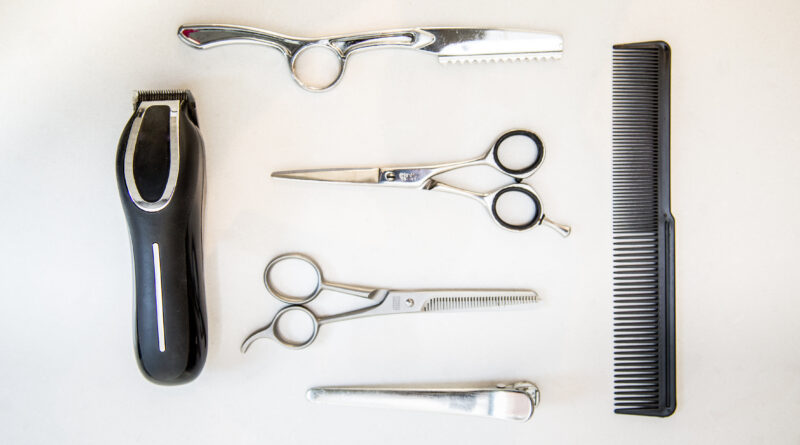Which Is Better Sapphire FUE or DHI?
What is DHI and Sapphire FUE?
DHI (Direct Hair Implantation) and Sapphire FUE (Follicular Unit Extraction) are both methods of hair transplantation.
DHI is a technique that allows the follicles to be taken directly to the scalp using a special device, instead of taking individual hair follicles. This method allows planting in accordance with the natural exit angle of the hair and the healing process is faster.
Sapphire FUE is the process of removing hair follicles one by one and then transplanting. In Sapphire FUE, a special sapphire blade is used and this blade removes hair follicles with less damage and causes less damage to the scalp. This speeds up the healing process and leaves less scars.
Both methods are among the popular and successful hair transplantation methods. In order to decide which method is appropriate, the person’s hair quality, transplant area, hair transplant goals and other factors should be considered.
Will Donor Hair Grow Again After DHI?
After the DHI procedure, the hair taken from the donor area continues to grow normally. While the DHI method removes the hair follicles from the donor area, it does not leave a wide hairline or scar like other traditional hair transplantation techniques. Therefore, after the DHI procedure, the cutting, growth and care of the hair in the donor area continues normally.
However, after the DHI procedure, the hair in the donor area may need to be cut shorter, which may affect the appearance of the hair during the growth process. Long-term care and attention after the procedure can help hair grow faster and healthier.
What is the Success Rate of DHI Hair Transplantation?
The success rate of DHI (Direct Hair Implantation) hair transplantation method depends on many factors. The success rate depends on the quality of the equipment and technology used, the experience of the doctor performing the procedure, and the patient’s hair quality, transplant area and hair transplant goals.
However, in general, the DHI method is considered a successful hair transplant method. When applied correctly, the hair follicles transplanted into the scalp are permanent and provide a long-lasting result. DHI method, like other hair transplantation techniques, cannot solve the problem of hair loss, but when applied correctly, it can minimize this problem and make the transplanted hair look more natural.
The success rate of the DHI method can range from 90 to 95 percent. However, this rate depends on the experience of the doctor performing the procedure and the patient’s hair quality, transplantation area and post-transplant care.
How Many Grafts Can You Make With DHI?
The number of grafts that can be made with the DHI (Direct Hair Implantation) method may vary depending on the hair quality of the person, the transplant area and the experience of the doctor who will perform the transplant. The number of grafts also depends on the patient’s degree of hair loss and hair transplant goals.
In general, an average of 3000 grafts can be transplanted in a single session with the DHI method. However, more than one session may be required for patients who require a larger planting area or higher hairline correction.
Before DHI transplantation, the doctor’s evaluation of the patient, the patient’s hair quality, transplantation area and hair transplantation goals are taken into account, and the appropriate number of grafts and transplantation area are determined.
Does DHI Require Shaving?
DHI (Direct Hair Implantation) method hair transplantation process involves placing individual hair follicles on the scalp with the help of a small needle. Therefore, during the DHI process, a certain area of the hair needs to be shaved. However, before the procedure, the area to be treated is determined and shaved in harmony with other hairy areas.
The DHI method requires less shaving than traditional hair transplant techniques. During the procedure, the length and shape of the hair is preserved and it is cut to adapt to the planting area. In this way, the shaved area displays a more harmonious appearance with other hairy areas during the recovery period after transplantation.
After the DHI procedure, the hair in the shaved area starts to grow again in a short time and the healing process is completed after about 7-10 days. After the healing process, the hair reaches its normal length and normal hair care can be done after transplantation.

Does DHI Damage Existing Hair?
During the DHI (Direct Hair Implantation) method, a special technique is used to prevent damage to the existing hair. During the procedure, individual hair follicles are placed on the scalp with a small needle. In this way, the existing hair is not damaged and the transplanted hair gains a more natural appearance.
The DHI procedure is less invasive than traditional hair transplant techniques and has minimal effects on existing hair. After the planting area is determined, the doctor collects the hair follicles with a special tool and then places them directly on the planting area. In this way, the existing hair is not removed during the procedure and the recovery period after transplantation becomes faster and easier.
After the DHI procedure, the existing hair continues to grow normally and gains a harmonious appearance with the newly transplanted hair. After the healing process, normal hair care can be done in the transplanted area and the existing hair can be extended normally.
Is Sapphire FUE Better?
Sapphire FUE and DHI (Direct Hair Implantation) hair transplantation techniques are both modern and innovative techniques and provide successful results in hair transplantation. However, deciding which method is better depends on factors such as the person’s Hair Transplant goals and hair quality.
Sapphire FUE method collects hair follicles and opens channels for hair transplantation using a thinner tool compared to the traditional FUE method. In this way, smaller scars and less bleeding occur in the transplanted area. Also, sapphire instruments cause less trauma because they are sharper and more durable. This means a faster recovery process.
The DHI method, on the other hand, involves placing the hair follicles directly in the transplantation area. This method is less invasive than traditional FUE techniques and preserves existing hair. In addition, it provides a more natural appearance and the transplanted hair can be placed in harmony with the natural direction of normal hair.
As a result, in order to decide which method is better, the hair quality of the person who wants to have hair transplantation, the goals of hair transplantation and the recommendations of the doctor who will carry out the procedure should be taken into consideration. Both methods can provide successful results, but personal preferences and needs may differ.
Which Procedures Are Right For Me?
Which hair transplant procedures are right for you depends on your hair condition, hair transplant goals and the characteristics of your scalp. For this reason, it is recommended to consult an experienced hair transplant specialist who considers the area to be transplanted and your hair quality.
Modern techniques such as Sapphire FUE and DHI are the most common methods used in hair transplantation. However, in order to determine which of these techniques is more suitable for you, factors such as the quality of your scalp, the size of the area to be transplanted, your hair density, the sensitivity of your scalp and your hair transplant goals should be evaluated.
In addition, you may need to consider other treatment options before having a hair transplant. For example, PRP (Platelet Rich Plasma) treatment is a method used to increase the growth of hair follicles and improve hair quality. This treatment can also be used to support hair transplantation or to help hair grow faster and healthier after hair transplantation.
As a result, determining the most appropriate hair transplant procedure can be determined by an experienced hair transplant specialist, taking into account the characteristics of your scalp and your hair transplant goals.
What is the Difference Between FUE and Sapphire FUE?
FUE (Follicular Unit Extraction) and Sapphire FUE are two different techniques that are frequently used in hair transplantation. Both techniques use similar tools to collect hair follicles, but the difference lies in the structure and cross-section of the tool used.
The FUE method uses a micromotor and a cutting tool called a punch to collect the hair follicles. Punch makes a small hole under the hair follicles and removes the follicle from the scalp. In this method, the punch tip can be of different sizes ranging from 0.6-1 mm in diameter. The FUE method is a minimally invasive technique and leaves minimal scars on the scalp for hair follicle removal.
The Sapphire FUE method uses the same principles as the FUE method, but uses a different tool. In Sapphire FUE, a punch made of sapphire crystal is used to collect hair follicles. Sapphire punch has a thinner and sharper structure and causes less trauma during the collection of hair follicles. Therefore, it ensures that the wounds on the scalp are smaller and the healing process is faster.
In summary, FUE and Sapphire FUE are two hair transplant technologies that use similar principles. However, Sapphire FUE creates less trauma during the collection of hair follicles and is a less invasive method. However, which method to choose depends on the characteristics of the scalp, the goals of the hair transplant and the recommendations of the hair transplant specialist.
How Long Does DHI Hair Transplant Take?
The duration of DHI hair transplantation may vary depending on the size of the area to be transplanted, the number of grafts to be transplanted and the experience of the center to be transplanted.
In general, DHI hair transplantation may take longer than FUE and other hair transplantation methods. During the procedure, each hair graft is taken with a special pen-shaped instrument and transplanted directly into the scalp. Therefore, it may take a longer period of time as each graft must be carefully planted during the procedure.
The duration of DHI hair transplantation may vary depending on the number of grafts to be transplanted. Generally, a few hours may be sufficient for a small transplant, while a larger hair transplant can take all day.
However, the experience of the center where hair transplantation will be performed may affect the duration of the procedure. A more experienced transplant center can transplant hair faster and more efficiently.
As a result, the duration of DHI hair transplantation can vary from a few hours to a few days. It may vary depending on the size of the area to be transplanted, the number of grafts to be transplanted and the experience of the center to be transplanted.
What is the Best Option for Hair Transplantation?
The best option for hair transplantation depends on the person’s hair condition, the degree of hair loss, hair characteristics, suitability for hair transplantation and the preferences of the person.
There are different options such as FUE, DHI, Sapphire FUE among hair transplantation methods. Each method has advantages and disadvantages, and which method is most suitable depends on the person’s hair condition and characteristics. For example, the DHI hair transplant method allows the hair to be transplanted more intensively, while the FUE method can transplant hair more quickly. Sapphire FUE method leaves less traces and causes less damage.
However, the best option depends on the person’s degree of hair loss and hair characteristics. The experience, technological equipment and equipment of the hair transplant center also play an important role.
Therefore, in order to determine the best option, it is important to consult a specialist and choose the most suitable hair transplant method suitable for the person’s hair condition and preferences.
You can benefit from the privileges by contacting us.
• Best price guarantee
• You will not encounter hidden payments.
• Free transfer to airport, hotel or clinic
• Accommodation is included in the package prices.




